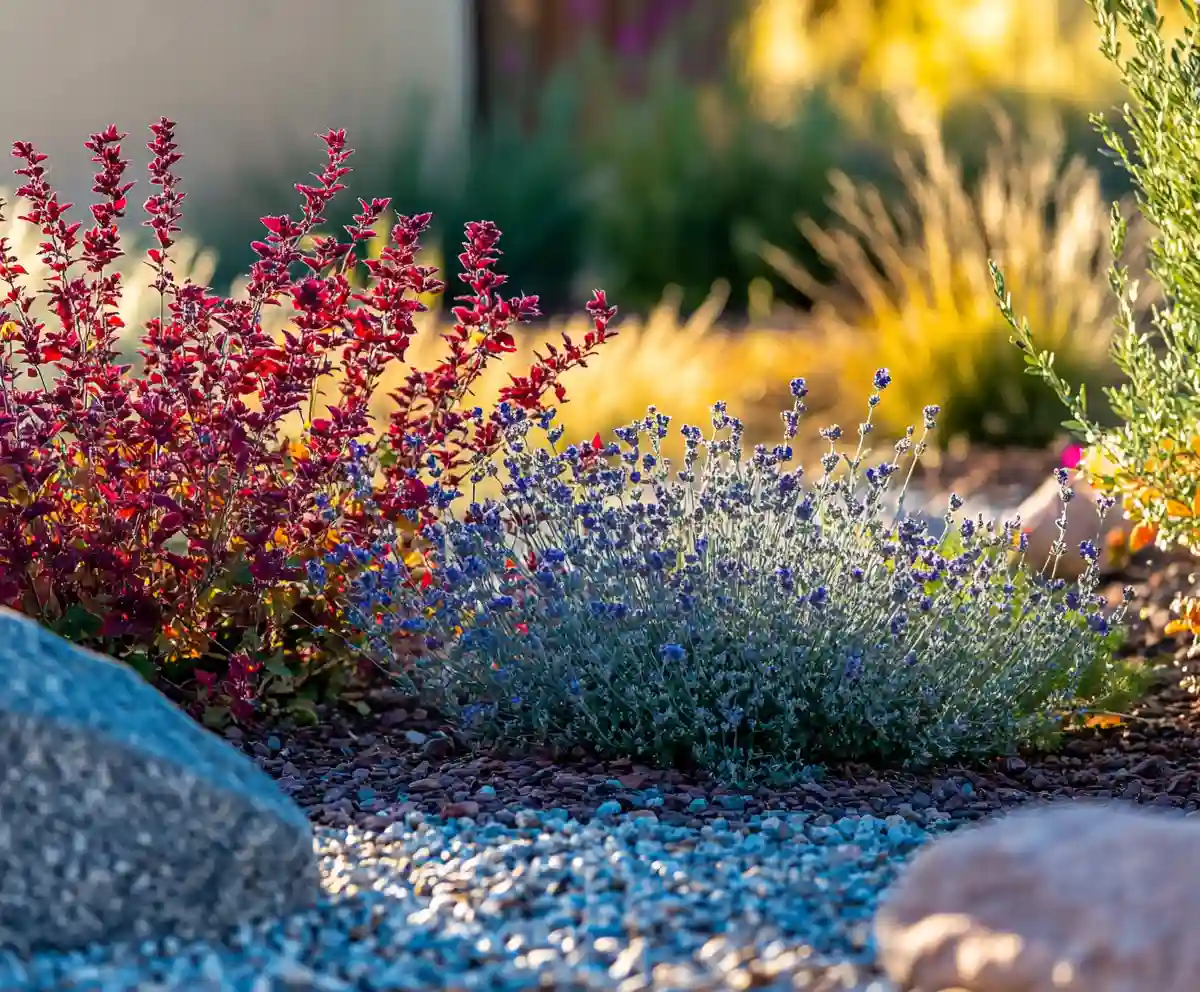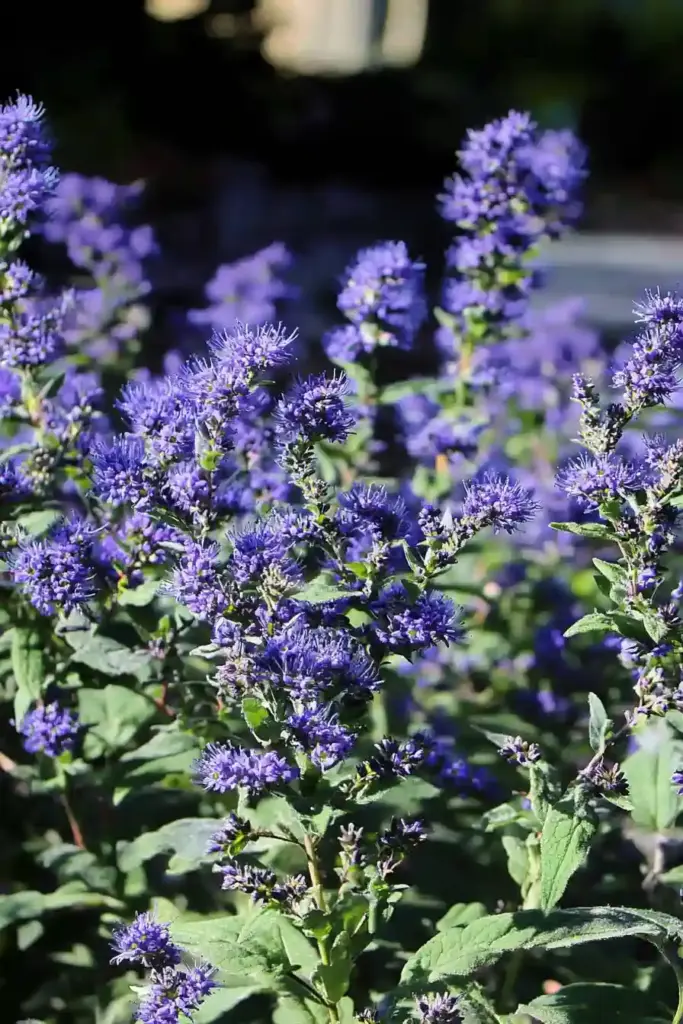If you’re trying to create a beautiful garden without draining your water supply—or your energy—you’re not alone. With droughts becoming more common and water conservation top of mind, many gardeners are turning to drought-tolerant shrubs as a smart, eco-friendly solution. These resilient plants thrive in hot, dry conditions and bring year-round color, texture, and even fragrance to your landscape with minimal fuss.
Whether you’re designing a pollinator haven, a modern xeriscape, or simply want a low-maintenance hedge that can beat the heat, this guide highlights 11 stunning shrubs that thrive in tough conditions—without compromising on beauty.
1. Blue Mist Spirea (Caryopteris)
A Breezy Beauty That Bees Love
If you’re looking for a shrub that practically takes care of itself, Blue Mist Spirea might be your new best friend. With its delicate, misty-blue flowers and soft silver-green foliage, this plant adds a cool-toned contrast to sun-drenched landscapes. It’s not only drought-tolerant—it’s also a pollinator magnet, attracting bees and butterflies all summer long.
Growing Tips:
- Botanical Name: Caryopteris x clandonensis
- Mature Size: 2–3 feet tall and wide
- Hardiness Zones: 5–9
- Soil Needs: Well-draining, moderately fertile soil
- Sunlight: Full sun is best
- Bloom Time: Late summer into fall
- Watering: Water only during prolonged dry spells once established
💡 Landscape Tip: Use this low shrub along walkways or in front of taller perennials to soften hard edges and add a dreamy, hazy effect in late-season beds.
2. Burning Bush (Euonymus alatus)
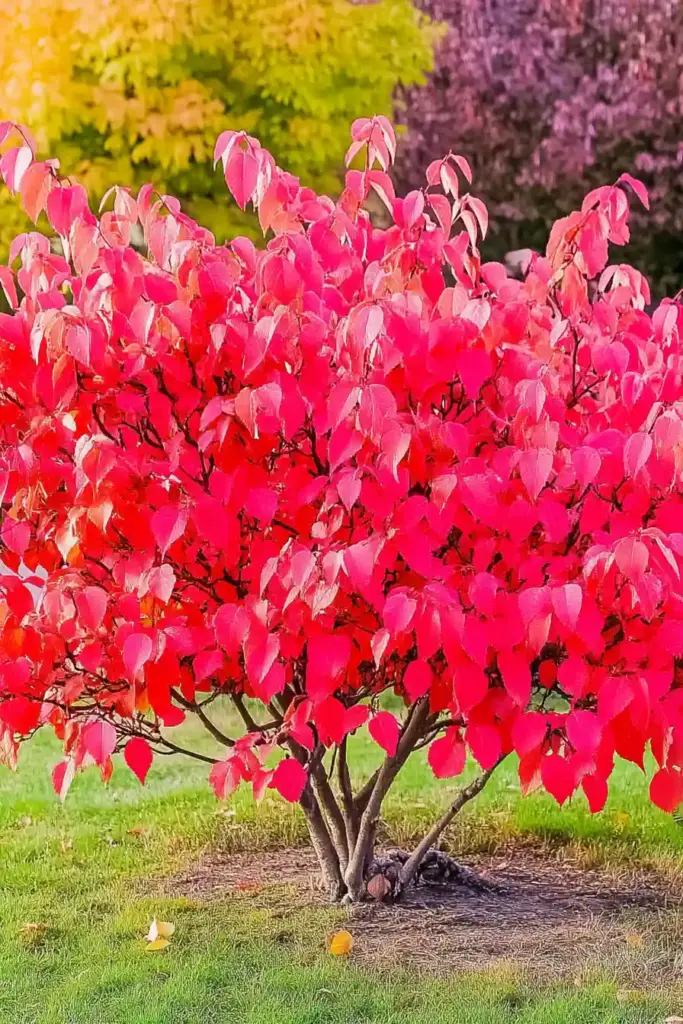
Fiery Foliage That Steals the Show
Want your landscape to glow with vibrant color in the fall without requiring constant watering? The Burning Bush lives up to its name with blazing red foliage that puts on a show as temperatures drop. It’s a hardy shrub that adapts well to various conditions and can thrive even in less-than-ideal soil.
Growing Tips:
- Botanical Name: Euonymus alatus
- Mature Size: 6–10 feet tall and wide
- Hardiness Zones: 4–9
- Soil Needs: Well-drained soil (tolerates poor soils once established)
- Sunlight: Full sun to partial shade (full sun for brightest color)
- Bloom Time: Insignificant flowers, grown for foliage
- Watering: Water regularly the first season; once established, drought-tolerant
💡 Landscape Tip: Makes a great hedge or foundation plant—but be sure to check local restrictions, as it’s considered invasive in some areas.
3. Butterfly Bush (Buddleja)
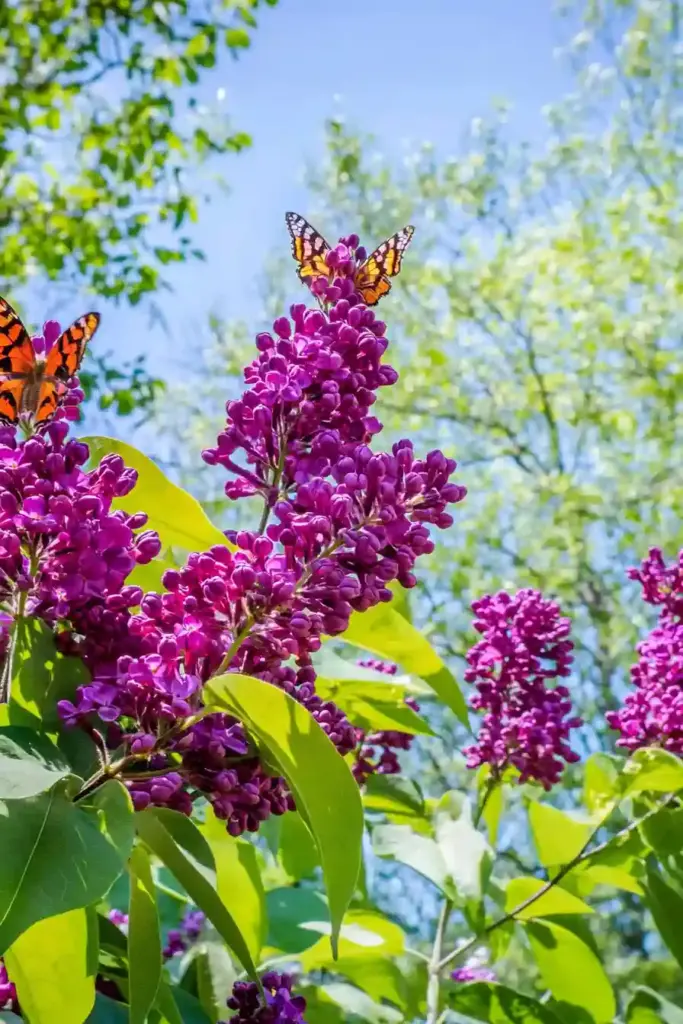
A Pollinator Paradise in Purple
The Butterfly Bush isn’t just pretty—it’s a pollinator powerhouse. Its long, cone-shaped flower clusters come in shades of purple, pink, and white, attracting butterflies, bees, and even hummingbirds. Best of all, it handles heat and drought like a champ, making it an ideal choice for sun-baked borders or wildlife-friendly gardens.
Growing Tips:
- Botanical Name: Buddleja davidii
- Mature Size: 6–12 feet tall, 4–6 feet wide
- Hardiness Zones: 5–10
- Soil Needs: Well-drained, moderately fertile soil
- Sunlight: Full sun
- Bloom Time: Mid-summer to fall
- Watering: Water weekly until established, then only during extreme drought
💡 Landscape Tip: Plant in a spot where you can sit back and enjoy the flutter of wings—near patios, decks, or garden benches.
4. Heavenly Bamboo (Nandina domestica)
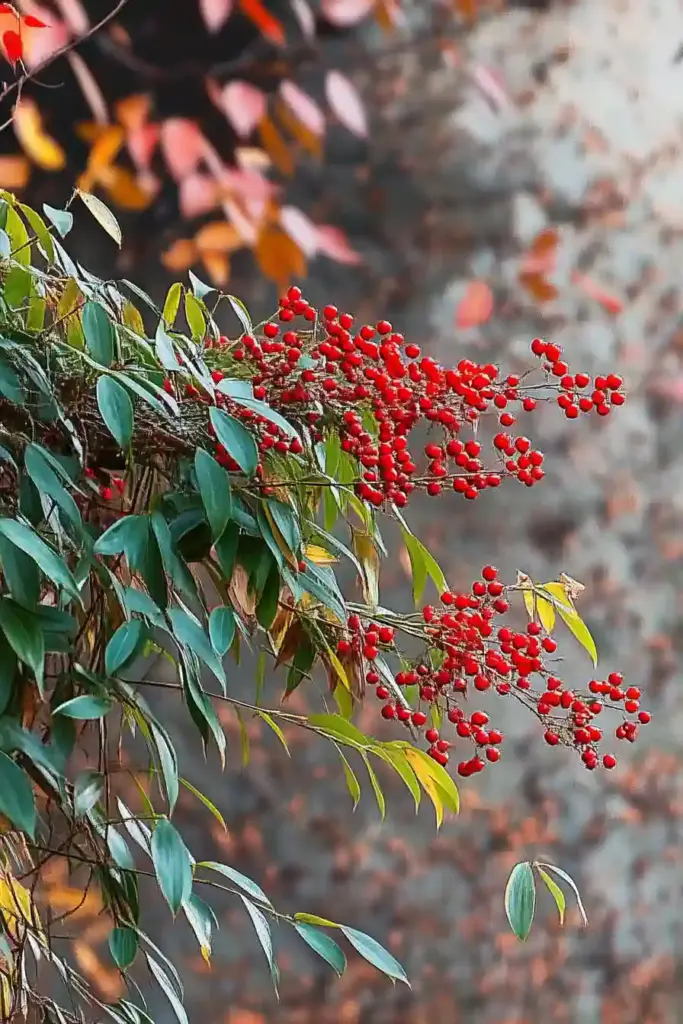
Graceful Texture and Color All Year Long
Despite the name, Heavenly Bamboo isn’t actually bamboo—but it is heavenly in terms of beauty and toughness. This evergreen shrub adds fine texture, red-tinged new growth, and bright berries that persist into winter. Once established, it’s surprisingly drought-tolerant, making it a versatile addition to both formal and wild landscapes.
Growing Tips:
- Botanical Name: Nandina domestica
- Mature Size: 4–8 feet tall, 2–4 feet wide
- Hardiness Zones: 6–9
- Soil Needs: Well-draining soil
- Sunlight: Full sun to partial shade
- Bloom Time: Late spring (small white flowers)
- Watering: Water weekly until established, then occasionally during dry spells
⚠️ Note: Berries are toxic to pets and wildlife if consumed in large quantities—avoid planting near pet zones.
💡 Landscape Tip: Use it as a backdrop in mixed borders, or plant en masse for an elegant hedge with seasonal interest.
5. Texas Sage (Leucophyllum frutescens)
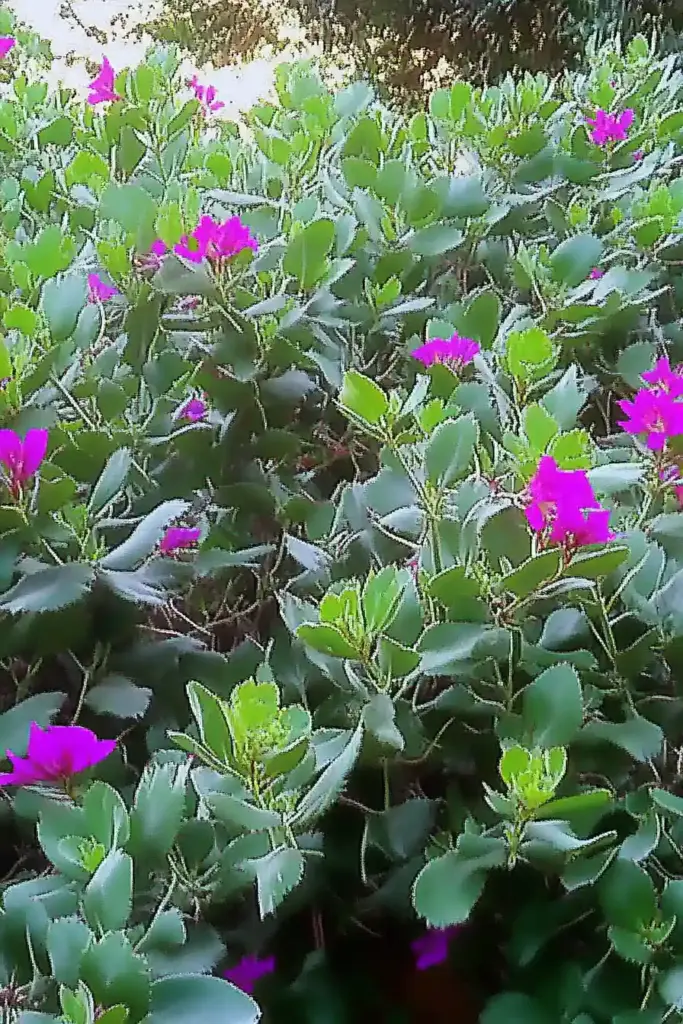
The Ultimate Low-Maintenance Native
If you’re dreaming of a tough-as-nails shrub that can handle scorching sun and bone-dry soil, Texas Sage is your hero. Also known as Barometer Bush, this silvery-leaved evergreen bursts into vibrant purple blooms after rainstorms—hence the nickname. Native to the Southwest, it’s built to survive and thrive with minimal water.
Growing Tips:
- Botanical Name: Leucophyllum frutescens
- Mature Size: 5–8 feet tall and wide
- Hardiness Zones: 8–11
- Soil Needs: Well-draining, sandy or rocky soil
- Sunlight: Full sun only
- Bloom Time: Summer to fall (intermittent after humidity or rain)
- Watering: Deep water every 2–3 weeks in summer; even less in winter
💡 Landscape Tip: Perfect for xeriscapes or wildlife-friendly borders—plus, its silver foliage adds contrast and softness to dry garden palettes.
6. Safari Sunset Conebush (Leucadendron ‘Safari Sunset’)
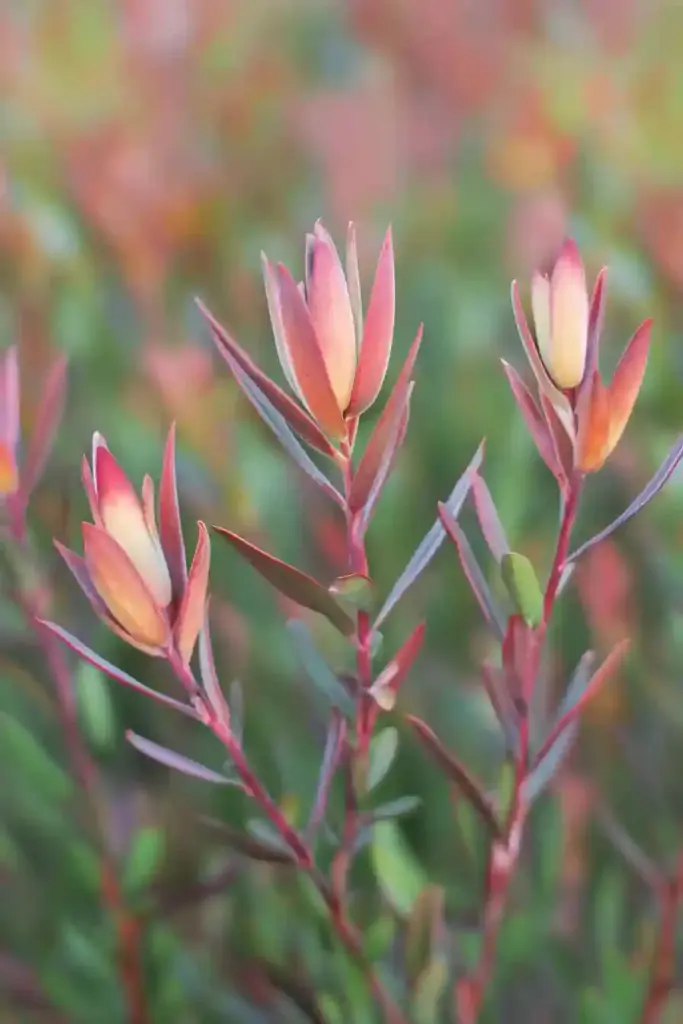
Exotic Flair with a Tough Core
Looking to add something truly unique to your dry-climate garden? The Safari Sunset Conebush delivers bold, burgundy-red foliage with a structural look that’s both dramatic and modern. Native to South Africa, this shrub thrives in dry, well-drained conditions and provides year-round color—even when little else is blooming.
Growing Tips:
- Botanical Name: Leucadendron ‘Safari Sunset’
- Mature Size: 4–10 feet tall, 3–6 feet wide
- Hardiness Zones: 9–11
- Soil Needs: Sandy, well-draining soil
- Sunlight: Full sun only
- Bloom Time: Spring (cone-like bracts add texture)
- Watering: Once a week during dry periods
💡 Landscape Tip: Use it as a bold focal point in rock gardens or pair with other Mediterranean plants like lavender or rosemary for a vibrant, heat-loving mix.
7. Coast Rosemary (Westringia fruticosa ‘Variegata’)
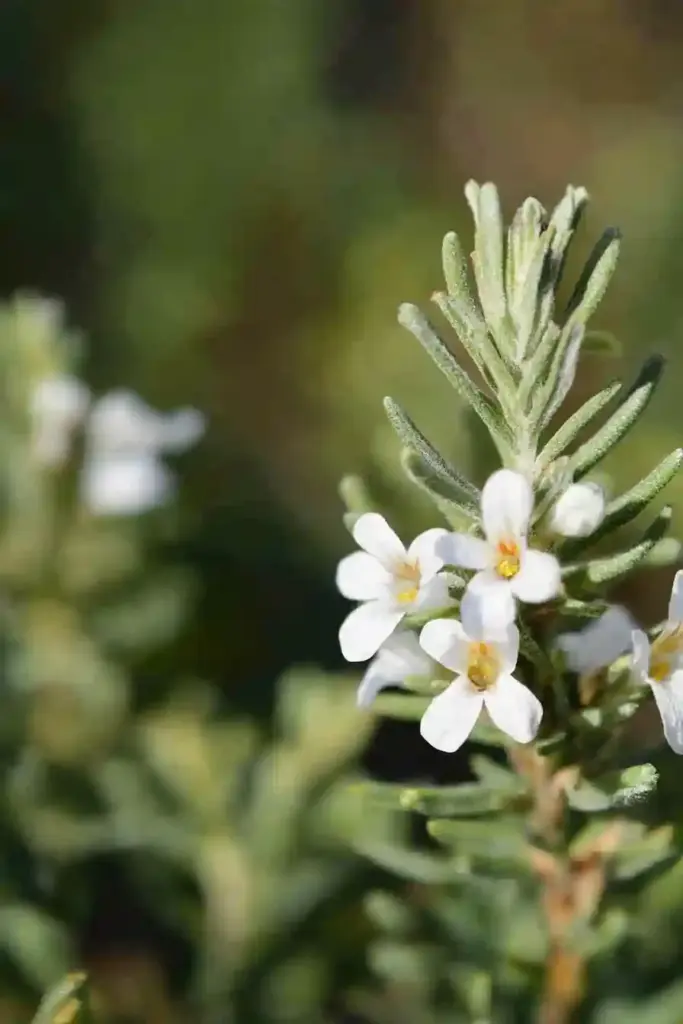
Coastal Charm with Year-Round Appeal
For a drought-tolerant shrub that’s as pretty as it is practical, Coast Rosemary is a top choice. With soft, fine-textured foliage and dainty white to pale purple flowers, this Australian native brings a coastal vibe to inland gardens. The ‘Variegata’ variety offers creamy-edged leaves that brighten up dry garden spaces—and it blooms nearly all year!
Growing Tips:
- Botanical Name: Westringia fruticosa ‘Variegata’
- Mature Size: 4–6 feet tall and wide
- Hardiness Zones: 9–10
- Soil Needs: Light, well-drained soil (amend with sand or peat)
- Sunlight: Full sun to partial shade
- Bloom Time: Nearly year-round in mild climates
- Watering: Weekly until established, then every 10–14 days
💡 Landscape Tip: Makes an excellent low hedge or edging plant. Clip lightly in spring to keep it tidy or let it go natural for a more relaxed look.
8. Anise Hyssop (Agastache foeniculum)
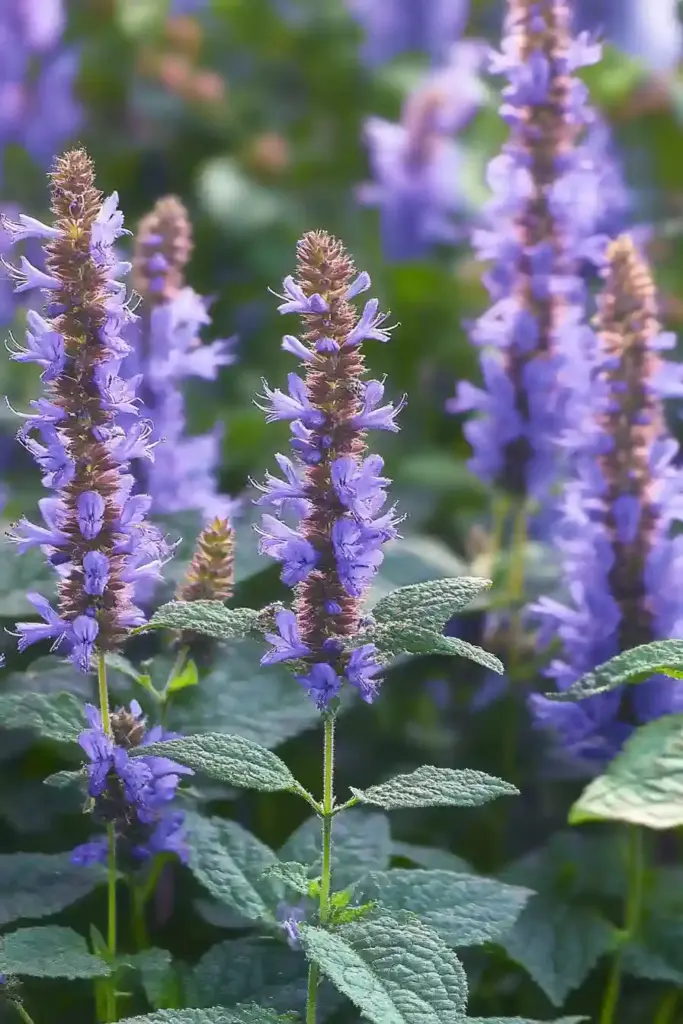
Aromatic, Colorful, and Thirst-Smart
Looking for a fragrant, flower-filled shrub that thrives in lean soil and dry heat? Anise Hyssop is a perennial favorite among gardeners and pollinators alike. With spikes of lavender or pink blooms and licorice-scented leaves, this tough beauty pulls double duty as a drought-tolerant stunner and pollinator magnet.
Growing Tips:
- Botanical Name: Agastache foeniculum
- Mature Size: 2–4 feet tall, 1–3 feet wide
- Hardiness Zones: 4–9
- Soil Needs: Well-draining, even rocky or sandy soil
- Sunlight: Full sun to partial shade
- Bloom Time: Early summer to fall
- Watering: Weekly until established; drought-tolerant afterward
💡 Landscape Tip: Perfect for cottage gardens, wildlife borders, or herb gardens. Combine with echinacea and yarrow for a pollinator-friendly powerhouse trio.
9. Sugar Bush (Rhus ovata)
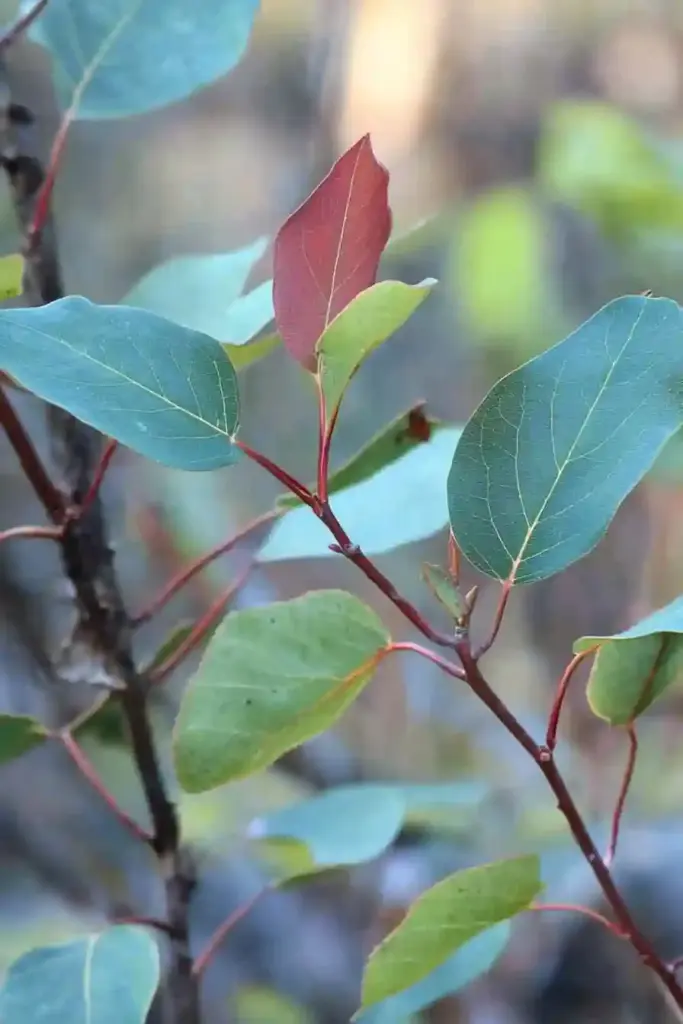
Native Resilience With a Soft Touch
A champion of dry, rugged landscapes, Sugar Bush is a native shrub beloved by Southwest gardeners for its durability and natural beauty. With leathery, evergreen leaves and delicate pink flower clusters in spring, this shrub adds structure and year-round greenery to low-water gardens. It’s low-maintenance, deeply rooted, and exceptionally drought-tolerant once established.
Growing Tips:
- Botanical Name: Rhus ovata
- Mature Size: 6–10 feet tall and wide
- Hardiness Zones: 7–11
- Soil Needs: Well-drained, often rocky soil
- Sunlight: Full sun to light shade
- Bloom Time: Spring
- Watering: Biweekly after establishment; little to no supplemental water needed
💡 Landscape Tip: Use as a native hedge, privacy screen, or background shrub. Its deep roots also help stabilize slopes and prevent erosion.
10. Stonecrop (Sedum spp.)
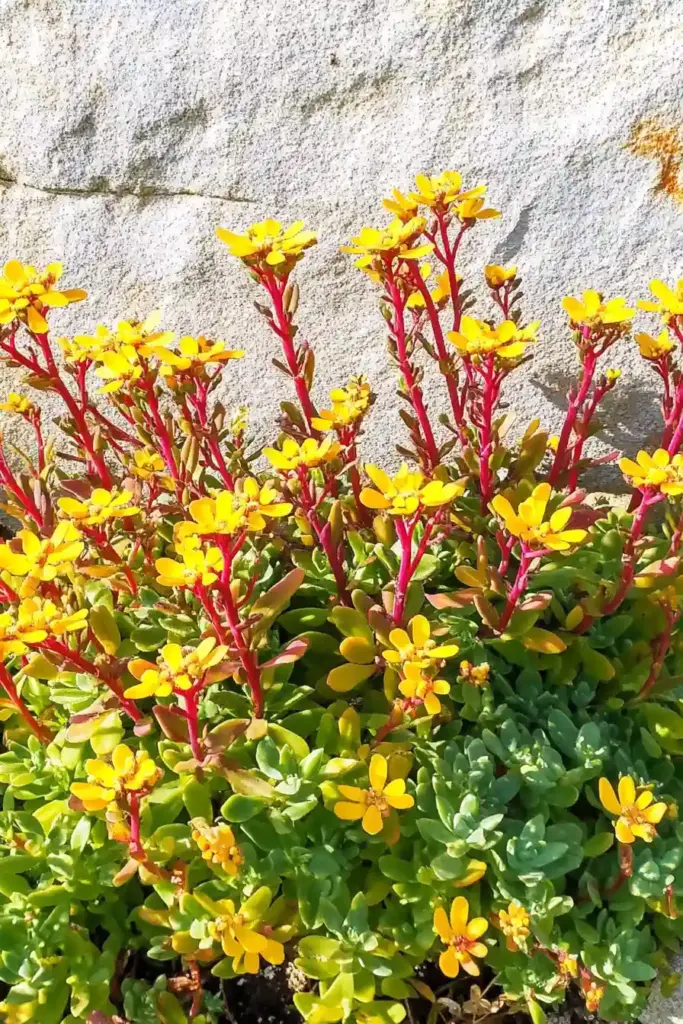
Succulent Style With Serious Stamina
If your soil is sandy, rocky, or just plain dry, Stonecrop is ready to shine. Technically a succulent, this group of hardy perennials brings texture and bold blooms to drought-prone landscapes. Varieties range from low-spreading ground covers to upright, bushy types that work beautifully in borders or containers. Once established, they’re practically bulletproof.
Growing Tips:
- Botanical Name: Sedum spp.
- Mature Size: 6 inches to 3 feet tall (varies by species)
- Hardiness Zones: 3–11
- Soil Needs: Fast-draining, gritty soil
- Sunlight: Full sun preferred
- Bloom Time: Mid-summer to fall
- Watering: Minimal—only when soil is completely dry
💡 Landscape Tip: Plant in rock gardens, between stepping stones, or in raised beds where drainage is excellent. Try mixing different sedum varieties for a mosaic of color and texture.
11. Catnip (Nepeta spp.)
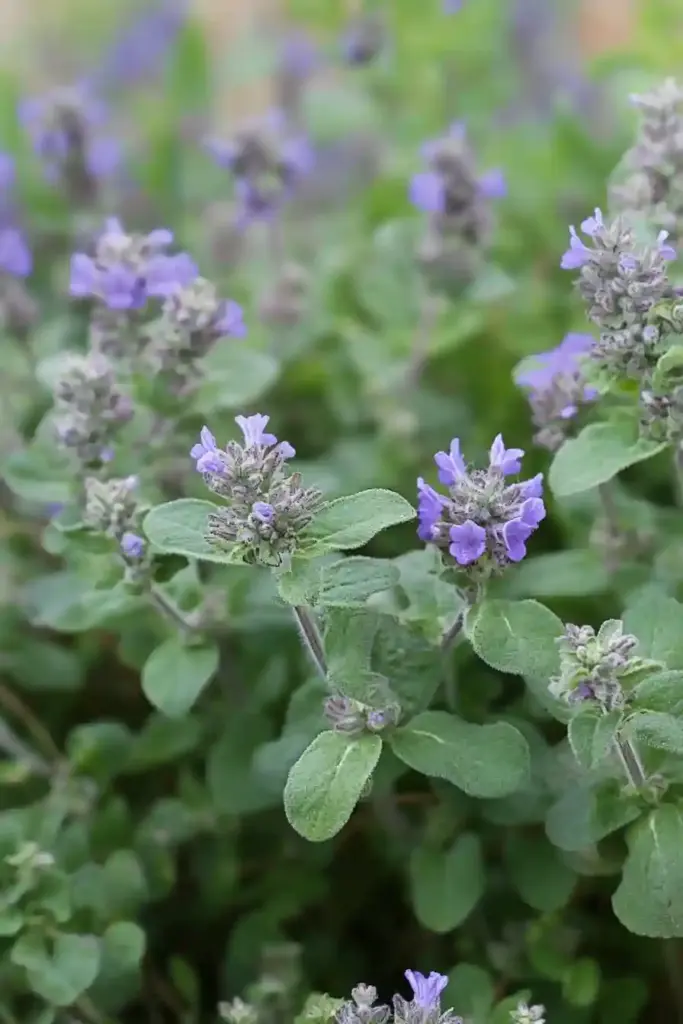
Garden-Friendly, Pollinator-Approved, and Drought-Tough
Known for driving cats wild, Catnip (or Nepeta) also happens to be a gardener’s dream. With soft gray-green foliage and waves of lavender-blue flowers, it’s incredibly easy to grow, highly drought-tolerant, and beloved by pollinators. Plus, it’s a natural pest deterrent—making it a multitasking addition to any garden bed.
Growing Tips:
- Botanical Name: Nepeta spp.
- Mature Size: 1.5–3 feet tall and wide
- Hardiness Zones: 4–8
- Soil Needs: Well-draining soil
- Sunlight: Full sun
- Bloom Time: Late spring to early fall
- Watering: Water deeply once every 2–3 weeks after establishment
💡 Landscape Tip: Perfect along walkways, as a border filler, or in herb gardens. Trim after blooming for a second flush of flowers later in the season.
🌱 Final Thoughts: Build a Resilient, Water-Wise Garden
Gardening in hot, dry climates doesn’t mean sacrificing beauty or biodiversity. With these drought-tolerant shrubs, you can create a vibrant, low-maintenance landscape that supports pollinators, adds year-round interest, and helps conserve water in the process.
Whether you’re going for bold foliage, fragrant blooms, or hardy natives, there’s a shrub on this list to suit every style and space. Start with one or two, and build your garden out from there—you’ll be amazed at how much life and color these tough plants can bring, even in the driest conditions.
🌿 Love gardening inspiration? Follow me on Pinterest for bold plant ideas, tips, and seasonal color!
More Posts
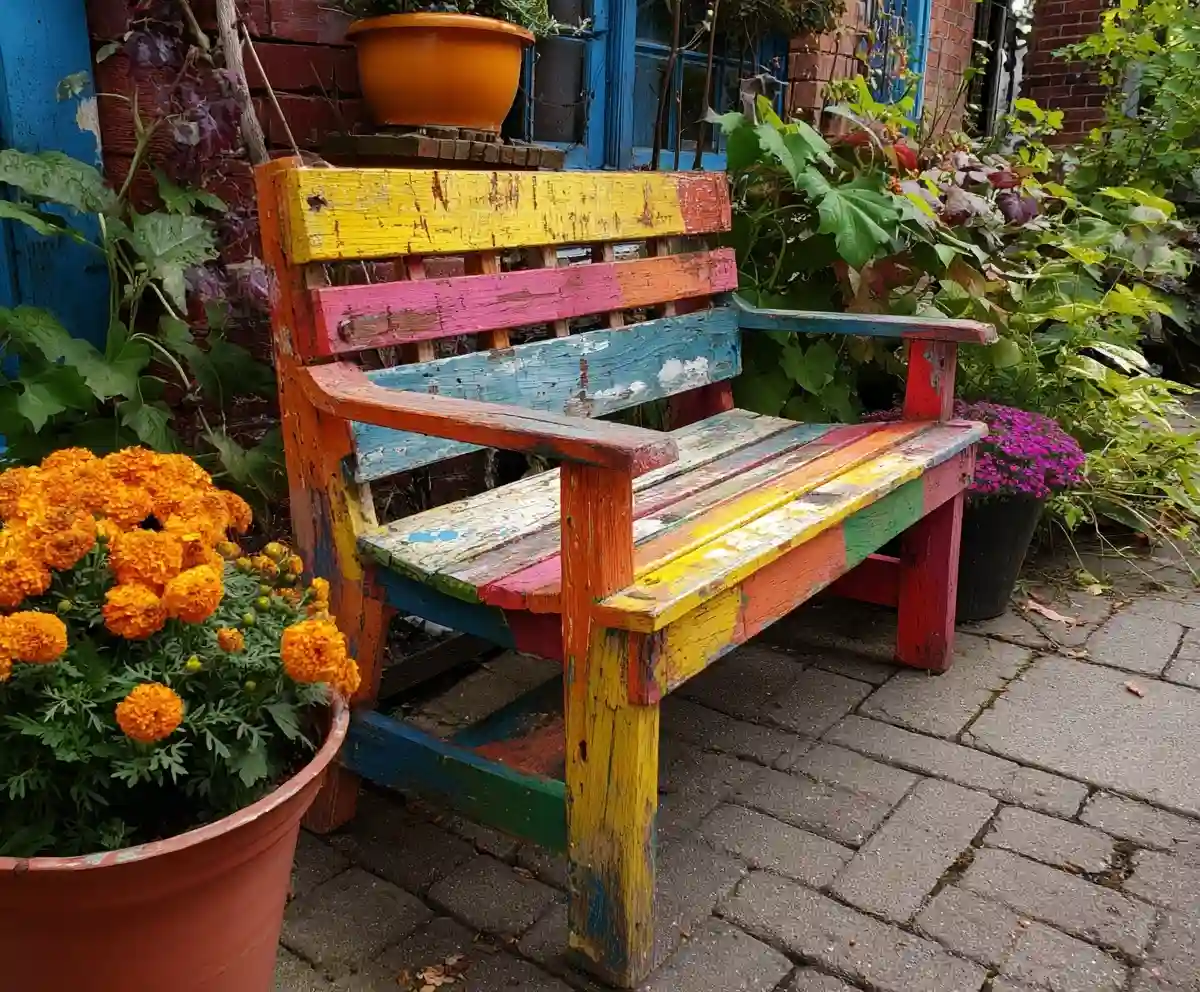
19+ Budget-Friendly Backyard Makeover Ideas
Backyard makeover ideas can turn even the most ordinary outdoor space into a warm, inviting retreat—without draining your wallet.
Read More →
21 Stunning & Simple DIY Clematis Trellis Designs
DIY clematis trellis designs are a beautiful way to blend creativity with function in your garden.
Read More →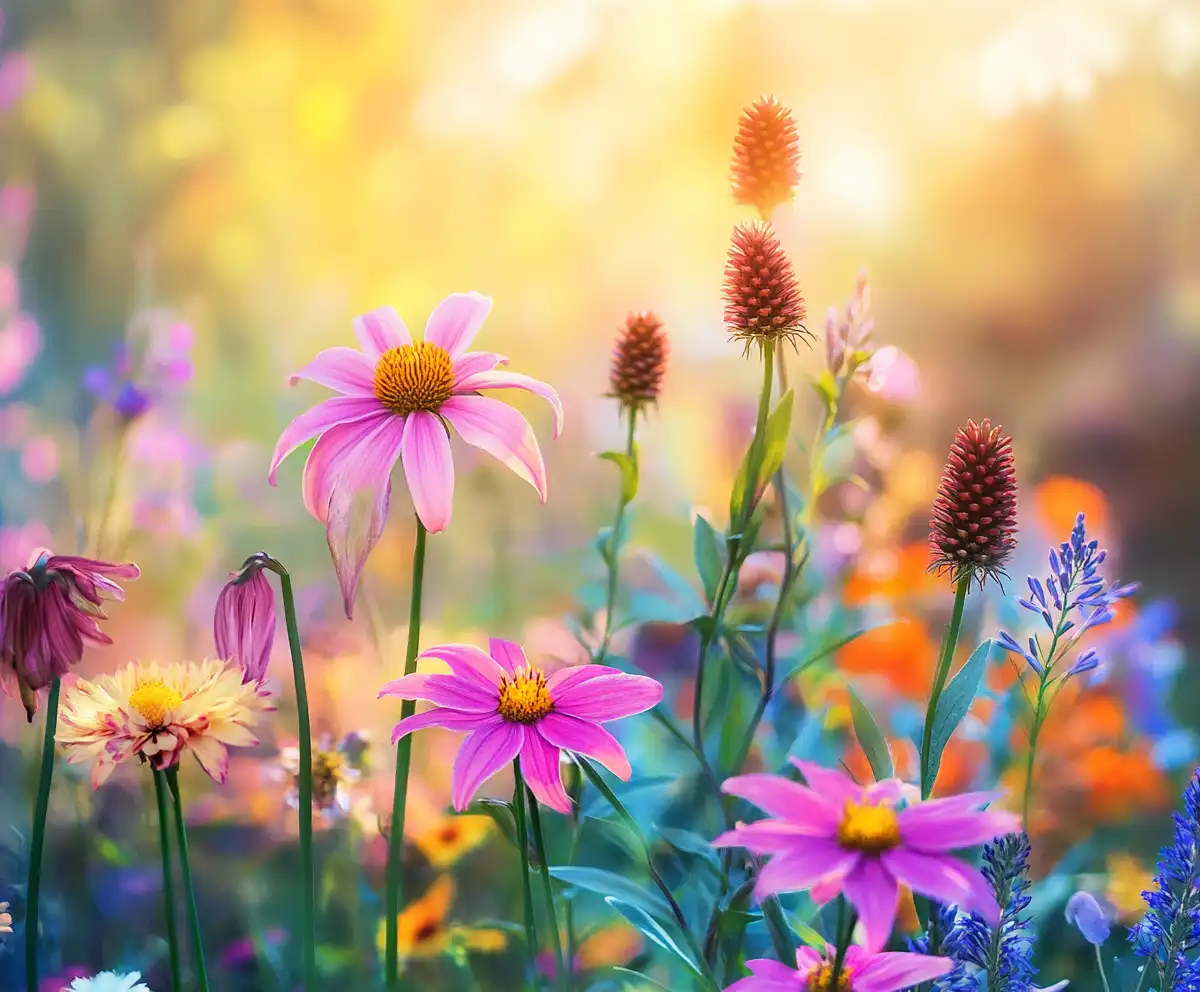
12 Full Sun Perennials That Bloom All Summer
Explore a selection of hardy perennials that flourish and bloom beautifully in full sun throughout the summer.
Read More →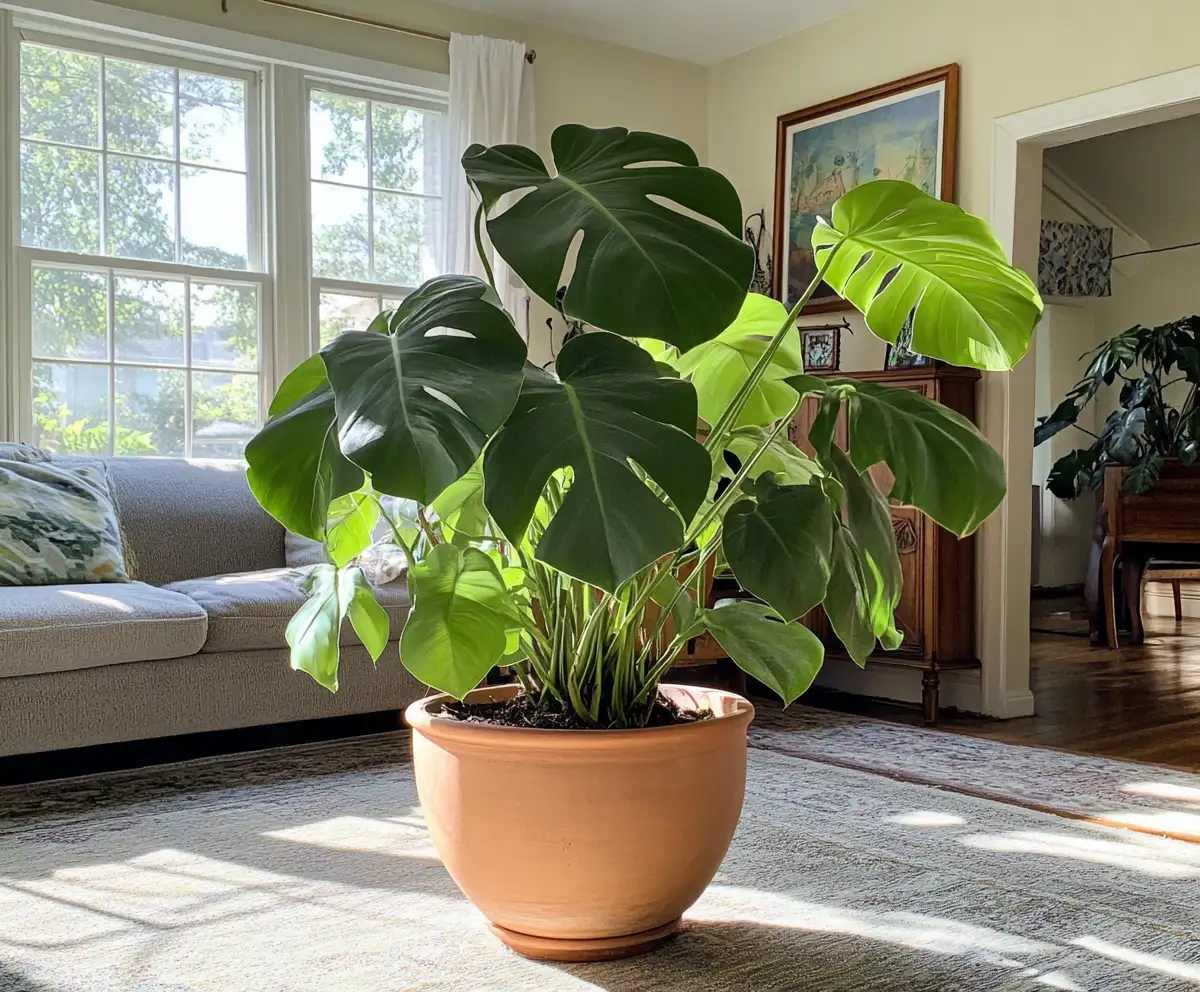
Houseplants for Living Room
Find the perfect houseplants to brighten and purify your living room while adding a touch of nature indoors.
Read More →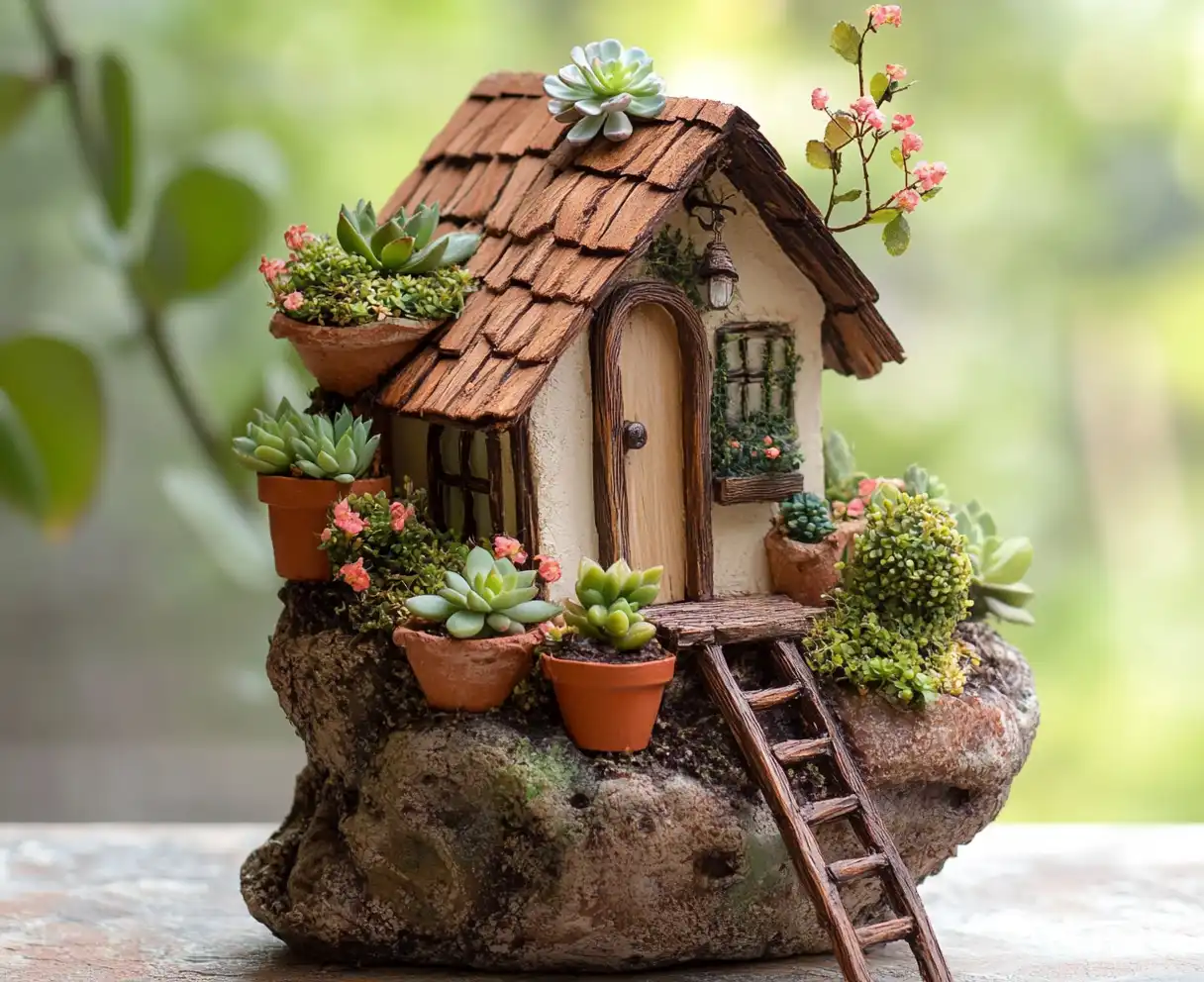
Backyard Play Area for Kids
Create a fun and safe backyard play area for kids with these inspiring design ideas and tips.
Read More →
Top Privacy Trees
Discover top tree varieties that provide natural privacy and enhance your outdoor space.
Read More →
